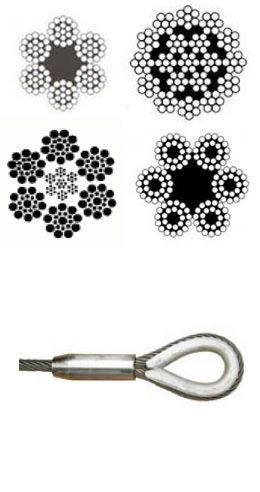Wire ropes would not exist without wires, which lay around a center rope in different and specific patterns. Strand design creates unique characteristics, like fatigue resistance and abrasion resistance. Strands that are made of a few large wires are more abrasion resistant and have less fatigue resistant compared to ropes of the same size that are made with smaller wires. Wires are wrapped in one or more layers that create a strand. A strand is helically laid around a center core, which forms a wire rope. The strand is responsible for all the tensile strength of a fiber core rope. Below, we will discuss basic strand constructions.
The most common example of wire rope is the single layer variant, which is made up of a seven-wire strand. This rope has a single-wire center and has six wires (same diameter) that surround it
Seale ropes have two layers of wires that are situated around a center wire. There is an equal number of wires in each segment. The strand is created to allow the larger outer wires to rest inside valleys that lay between smaller inner wires.
Filler wire constructions have two layers of uniform-sized wires. The uniformed wires surround a center that has an inner layer that has half the number of wires compared to the outer layer. An equal number of small filler wires to the inner layer is laid into valleys of the inner layer.
Nylon Slings
When strands are uniformed in a single operation that uses two or more of the above constructions, it is commonly referred to as a combined pattern. These constructions allow for specific characteristics of wire rope.
For more information on wire rope construction or questions about nylon slings, please let us be your first call.
Related Reading: